
James Marshall discovered gold on January 24, 1848, at Sutter's Mill, beginning the California Gold Rush. The New Jersey carpenter was working at John Sutter's Sacramento River settlement when he found the nugget. The discovery lured more than 90,000 people to California in the two years following his find and more than 300,000 people by 1854. James Marshall died penniless in 1885.
Extend your study of historical fiction and/or the Gold Rush by inviting your students to read some Gold Rush Letters, written to people in Missouri by Gold Rush miners, or some of the excerpts from letters and other writings by visitors to and residents of the Gold Rush area in California. Ask students to think about the following questions as they read and discuss the letters:
- What new information did you learn by reading these documents?
- How were the people in the letters different from what you'd imagined?
- How much do the letters talk about gold? What else is discussed?
After they've explored the letters, ask your students to imagine they were alive during the Gold Rush and had traveled to the area. Have each student write a letter to a family member about his or her imaginary experience using the interactive ReadWriteThink Letter Generator. Have students extend their work by using their letters to start creating a work of historical fiction. More tips are available for the Letter Generator.
Investigate the art, artifacts, and people who were affected by the Gold Rush at this site from the Oakland Museum of California, which boasts primary documents and curricular materials.
This companion site to the PBS film The Gold Rush includes a transcript of the film, along with a variety of related resources. The site includes maps, a timeline, book lists, a teacher's guide to the film, and other resources.
This collection includes reports from witnesses to the Gold Rush, including John Sutter himself, plus stories from pioneer women, newspaper stories, and additional historical information.
This site from PBS Kids offers information about the Gold Rush, written for kids, as well as an interview with a Gold Rush expert and interactive activities.
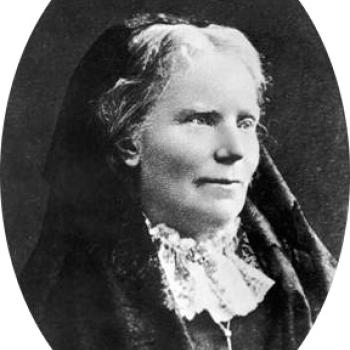
Elizabeth Blackwell was not only the first woman in the United States to graduate from medical school, earning an MD degree, she also graduated first in her class. Blackwell served as a doctor for the Union Army during the Civil War. After the war, she founded the Women's Medical College in New York with her sister Emily Blackwell, who had also become a doctor. Elizabeth Blackwell died May 31, 1910.
Elizabeth Blackwell applied to 16 colleges before she was admitted to the Medical Institution of Geneva College, in New York. When she died in 1910, more than 7,000 women had earned medical degrees, and all of them had Dr. Blackwell to thank for going first and working as an advocate for women in the medical profession.
With your class, explore other famous firsts. Begin by brainstorming a list of people who have done something "first" (i.e., the first person on the moon, the first woman to run for national elected office, the first Latino to win the Nobel Prize). To start your list, check out this month's entries on Amelia Earhart and Jackie Robinson. Once you've collected a list of firsts, divide your class into small groups to conduct some research into the lives of one of these people. Have each group design a multimedia presentation to report their research results to the rest of the class.
This site, from Social Studies for Kids, includes a biography of Blackwell and information on her family's work to end slavery and to support women's suffrage.
This National Library of Medicine online exhibit focuses on Blackwell's achievements and includes links to related historical documents, maps, and photographs.
Explore the contributions of the physicians who have followed in Dr. Blackwell's footsteps on this National Institutes of Health site, which includes interactives, book lists, and lesson plans.
The Library of Congress provides the text of a letter Blackwell wrote in 1851 discussing the importance of women's rights.
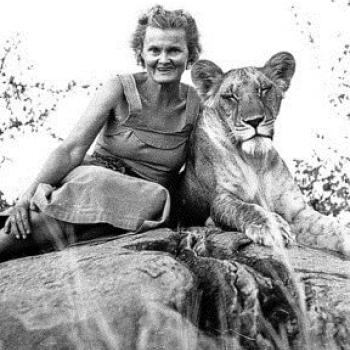
Naturalist Joy Adamson's novel Born Free made people aware of the dreadful loss of habitat and wildlife in Kenya, where she and her husband George lived. She pledged all the money earned by her books to wildlife preservation. She was murdered in Kenya on January 3, 1980, by a servant.
Chances are that your students have never seen the movie Born Free. Frequently, younger students do not realize that lions are in the cat family, and this video provides an excellent springboard to a study of cats for students in grades K-2. Create a KWL chart on cats and begin researching these fascinating animals. Students can use the ReadWriteThink Animal Study student interactive to organize the information they gather about lions. Try the Investigating Animals: Using Nonfiction for Inquiry-based Research or Animal Study: From Fiction to Facts lesson plans for more structured activities.
Older students can take action to help ensure the survival of endangered species, such as the Cape Lion, by writing persuasive letters lobbying for programs and resources that protect the animals and their habitats. The Can You Convince Me? Developing Persuasive Writing lesson plan provides all the resources required for such a project.
This National Geographic site brings the sounds and images of lions in their natural habitat to your classroom. Resources include audio and video clips.
Learn about the cats who make their home at the National Zoo in Washington, D.C. Included are links to information about conservation, an image gallery, and a "Tiger Cam."
This PBS Nature site explores the reasons for the declining population of African lions and searches for solutions to the problem.
The San Diego Zoo site includes details on lions and their lives, fun facts, and conservation efforts. The "At the Zoo" tab offers information on the lions who have lived at the San Diego Zoo.
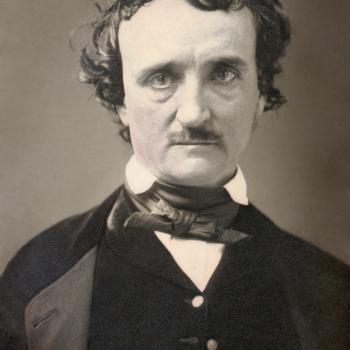
On this date in 1845, American author Edgar Allan Poe's famously eerie poem "The Raven" was published in New York Evening Mirror. Equally praised and panned by critics of the day, the poem made Poe famous throughout America and England. "The Raven" was parodied soon after its publication, and continues to be an important cultural and literary text even today.
Read aloud the opening stanzas of Poe's "The Raven." Ask students to note their reactions to the language of the poem as they listen. The following questions can guide their written or verbal responses:
- What are their impressions of the poem's speaker and atmosphere?
- What emotions/feelings might the speaker be experiencing?
- How can a reader tell the mood and tone of the poem, after hearing only the opening stanzas?
- What words, images, and details does Poe provide to create this effect?
After students have finished, glean from their responses the words and phrases Poe uses to create the voice of the speaker, a figure who is obviously not "normal." Continue reading the poem, or distribute copies to students for their own reading. Discuss the changes or development of students' first impressions as "The Raven" continues.
This interactive study resource offers students a chance to explore the devices of alliteration, assonance, and internal rhyme, as well as learn challenging vocabulary and allusions within "The Raven."
Gathered by the Edgar Allan Poe Society of Baltimore, this site includes the text of Poe's stories and poems. The homepage offers biographical information, details on geographic locations important to Poe, and other articles.
This PBS website offers biographical information about Edgar Allan Poe and links to related Internet resources.
Written by Edgar Allan Poe, this essay discusses his views on writing and explains the logic and reasoning behind the choices he made in "The Raven," citing specific references and examples from the poem.
Hear classic readings of Poe’s "The Raven" by Vincent Price, James Earl Jones, Christopher Walken, Neil Gaiman, Stan Lee and more!
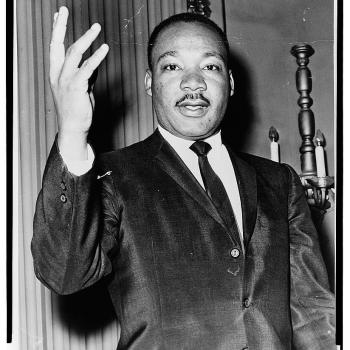
Martin Luther King, Jr. was born on this day in 1929. Following in his father's and grandfather's footsteps, he was ordained as a minister in 1948. Dr. King became one of the most important leaders of the civil rights movement in the U.S., advocating a nonviolent approach to fighting for equal rights. He received the Nobel Peace Prize in 1964. Dr. King was assassinated in Memphis, Tennessee, on April 4, 1968.
Listen to a recording of Martin Luther King's I Have a Dream speech and discuss the meaning of his words. This I Have a Dream lesson plan includes numerous discussion questions that can help guide class exploration of the speech.
Once students understand this speech, ask them how they would convey Dr. King's vision and character without using words. To get started, look at these photographs of Dr. King and historical events in which he was involved. What messages are these photographs communicating?
Using the photographs as a model, have students work in groups or as a class to create a mural that depicts their understanding of Dr. King's vision of peace. The Art and Activism unit from Tolerance.org includes lessons on planning, creating, and sharing murals that you can use to get your own class mural underway. Once the project is complete, display murals throughout your school to honor Dr. King.
On January 20, 2014, people throughout the world will honor the life of Martin Luther King, Jr. Find out how to participate by making this holiday "a day ON, not a day off."
The Seattle Times provides an extensive collection of resources including articles, transcripts, photos, and information about the holiday in King's honor.
Visitors to this extremely comprehensive site will find a chronology, encyclopedia, biography, videos, lesson plans, and more.
This PBS American Experience website offers a collection of resources, including information on Dr. King's philosophy of non-violence, video clips, and an interactive map of U.S. Civil Rights hot spots. Also featured is a teacher's guide to the Citizen King documentary.

Judy Blume has written books for all ages. Her books have received close to 100 awards and have been translated into 20 languages. Judy Blume continues to write books that delight all ages.
Tales of a Fourth Grade Nothing is a perfect read-aloud. Students will enjoy listening to the adventures of Farley Drexel, a.k.a. Fudge. When you finish reading the book, ask your students what they thought was the funniest part of the story. Invite students to work individually or with a partner to create cartoons of the scenes they liked most. They can use the Comic Strip Planning Sheet to get started. If students have computer access, have them use the Comic Creator to create their strips. Visit the Comic Creator page for more information about using this tool in the classroom. This activity can be done with any of Blume's humorous stories.
This is Blume's official website. Students can read her biography, view photos, watch a video about her latest book, learn some writing tips, and more!
This resource from Scholastic includes a biography of Blume, an interview with her, and a list of her books.
This ARTSEDGE guide is used before and after a Kennedy Center performance of Tales of a Fourth Grade Nothing. It includes activities that can easily be adapted for classroom use without attendance at a performance.
A panel of authors discuss their favorite Blume books, how they related to the universal challenges and horrors of growing up that Blume put on the page, and her impact on their work.
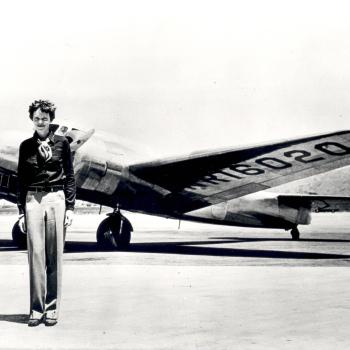
Amelia Earhart was born in 1897. Once she began flying in 1921, she quickly set numerous women's altitude, speed, and distance records. On this day in 1935, Earhart became the first person-male OR female-to fly solo from Hawaii to California. On June 1, 1937, Earhart began her last journey: to fly around the world. After successfully flying 22,000 miles, she failed to arrive at a scheduled stop on Howland Island in the Pacific. No trace of her or her plane has ever been found.
Heroes come in many shapes, sizes, situations, and packages. A hero to one person is not necessarily a hero to another. This day in history provides a chance for students to explore the definition of a hero. Have students ask at least three people (one who is their age, one who is younger, and one who is older) these questions:
- Who is someone you identify as a hero?
- Why do you think that person is a hero?
Once they've gathered their interview answers, ask students to share them with the class. Have them explore, as a class, the characteristics that are repeated and the reasons for any commonalities found in the results. Additionally, ask students to note anything particularly unusual in the responses. Then, use the interactive Venn diagram to create a classroom Venn diagram with three circles, each identifying one of the most common characteristics of a hero. Finally, have students place each of the heroes' names on the appropriate place in the Venn diagram.
When everyone has had a chance to share their findings, students can create posters that include pictures of their own heroes and words that describe the qualities that make each one heroic.
This Library of Congress page includes photographs, a brief biographical sketch, and links to additional stories abut Amelia Earhart.
This page, part of the Women Who Changed History section of the Scholastic website, provides a teacher's guide and student activities related to Amelia Earhart.
This site invites people around the world to publicly celebrate their heroes through images, video, and text.
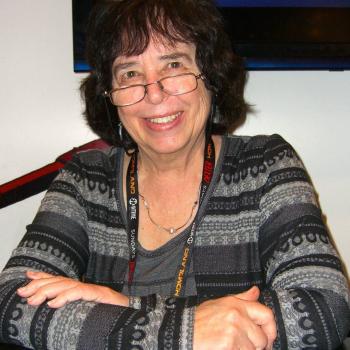
Jane Yolen has written more than 170 books for children and adults. Her books, ranging in topic and theme from animal picture books to books about the Holocaust, have won many awards over the years. Yolen has been called "America's Hans Christian Andersen."
Jane Yolen and her family are avid bird watchers. Yolen's love of birds and nature is conveyed in many of her books. For example, Owl Moon, The Bird of Time, Bird Watch, Off We Go, and The Originals would be good books to read when starting a unit on animals.
After students read one of Yolen's books, have them retell the story in the form of a puppet show. (The Caldecott Award-winner Owl Moon motivated second-grade students to create dioramas that can be used as a model.) Students can then research animals in the book and document their findings with the Animal Study interactive tool. As a follow-up activity, take your students on a nature walk. Upon returning to class, have students create watercolor paintings of the animals they saw.
For older students, consider exploring some of the themes in Yolen's books for young adults, such as The Devil's Arithmetic or Armageddon Summer.
This site is an excellent resource for learning more about Yolen. It includes a biography, a comprehensive list of Yolen's books, and separate sections for kids, teachers, and writers.
The University of Rochester Libraries website offers this transcript of a lengthy interview with Yolen, focusing primarily on her work with Arthurian legend.
In this online workshop from Scholastic, Yolen guides students through the process of writing myths. The author provides information on writing strategies and a few warm-up activities.
Jane Yolan's online journal offers a glimpse into her life and how it informs her work.
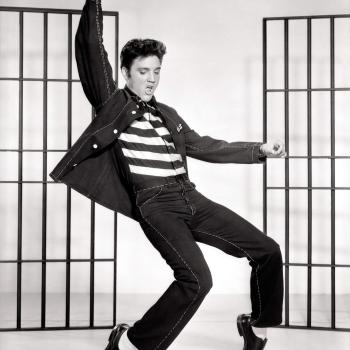
Elvis is known throughout the world as the "King of Rock 'n' Roll." Over one billion of his records have been sold. Elvis starred in 31 feature films as an actor, gave over 1,100 concert performances, and received numerous awards. Graceland, Elvis Presley's home, is the most famous home in America after the White House, attracting over 600,000 visitors every year. In 1970, Elvis went to the White House to offer his assistance to then-President Nixon in the nation's war on drugs.
Invite your students to tour the National Archives exhibit When Elvis Met Nixon, where they can read the five-page letter that Presley personally delivered to the White House, the story of the famous meeting (with accompanying photos), the agenda for the meeting, and the thank-you letter Elvis wrote to the President after the visit.
After reading these primary documents, younger students can discuss the reasons Elvis wanted to meet the President; then, they can explore what would happen if a contemporary recording artist were to meet with the President today. Referring to the agenda for Elvis's meeting, have students work collaboratively to create an agenda for a contemporary artist. Have them use the interactive ReadWriteThink Letter Generator to write a letter to the artist suggesting a meeting with the President to discuss the problem of drugs, racism, violence, or another contemporary issue. More tips are available for use with the Letter Generator.
Older students might explore the various ironies of the meeting in a discussion of Nixon's political motivations for agreeing to the meeting and Elvis's interest in being made a "Federal Agent at Large" who would fight drug abuse and the Communist threat.
Thanks to the Freedom of Information Act, you and your students can browse over 600 pages of information that the federal government collected in relation to Elvis Presley. Pair this site with exploration of the Fensch book in the Texts section to introduce students to the process by which primary documents become fodder for research!
The Rock and Roll Hall of Fame's online Elvis exhibit describes his career and the artifacts included in the original exhibit. Be sure to see the biographical page on this 1986 inductee.
This PBS Culture Shock resource offers information about the controversy over Elvis's early television appearances on the Milton Berle Show, the Ed Sullivan Show, and the Tonight Show.

Annie Moore, a 15-year-old girl from Ireland, became the first person to enter Ellis Island on New Year's Day, 1892. In the 62 years that Ellis Island served as the entry point to the United States, over 12 million people were processed through the immigration station. Ellis Island was closed on November 12, 1954. Part of the Statue of Liberty National Monument since 1965, the buildings were restored after decades of disuse and reopened as a museum in 1990.
Take your students on an interactive tour of Ellis Island. Scholastic provides a tour, including audio, video, and photographic resources.
Allow students plenty of time to explore the tour and the resources provided there, supplementing the information with additional resources from the Web Links section below. Be sure to listen to the audio stories of immigrants included in most stages of the tour. Invite students to interview an immigrant in your town to collect his or her story. Students can publish the stories they collect online and read stories published by other students.
To show how children who did come through Ellis Island felt, you might share books such as The Memory Coat (Scholastic, 1999) and Dreaming of America: An Ellis Island Story (Troll Communications, 2001). Based on what they've learned through their exploration of Ellis Island online, their interview with a local immigrant, and in the available texts, have students assume the persona of someone who has just landed on Ellis Island and write a diary entry about his or her experiences. Collect the entries into a class anthology that shows students' understanding of the feelings of people coming to the U.S. for the first time.
This Library of Congress site from the America's Story collection explores the arrival of 15-year-old Annie Moore, the first person to enter the U.S. through the gates of Ellis Island.
This site includes historical information on the role that Ellis Island played in the lives of the more than 12 million people who immigrated to the United States over the course of the 62 years.
Ellis Island comes to life in this interactive tour featuring audio, photographic, and video files. This site is part of a Scholastic collection titled Immigration: Stories of Yesterday and Today.